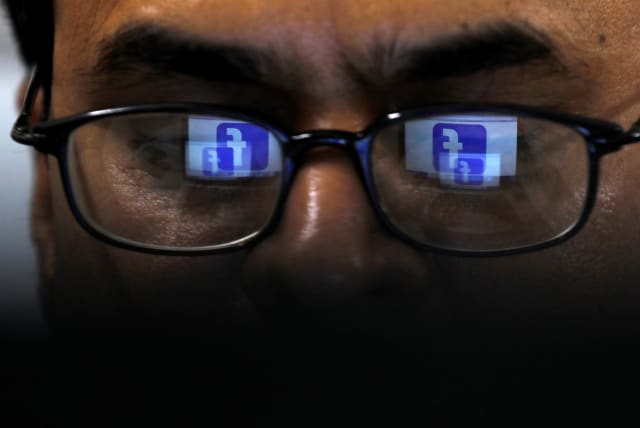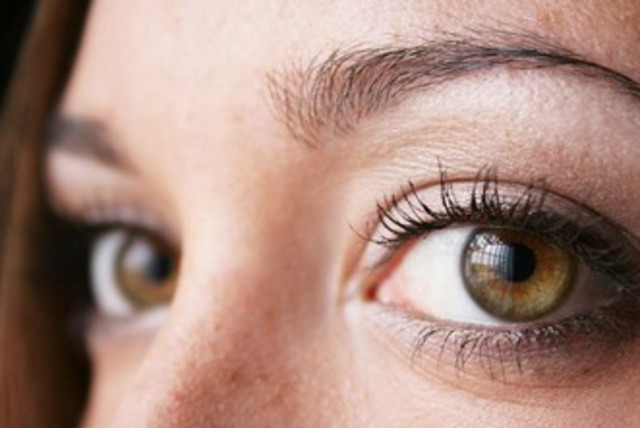The effects of war on our eyes - opinion

The consequences of increased screentime, due to the war, can be felt in different ways and at different ages. Specialized solutions and exercises may relieve the damage.
We all find ourselves gathering these days mainly at home and spending many hours a day in front of screens. This situation forced upon us affects not only our physical and mental state, but also our eyes. The consequences can be felt in different ways and at different ages – from the youngest children at home who currently spend little time outside and a lot of time in front of screens to adults who are returning to online meetings, working in front of screens, consuming lots of content on their phones, etc.
In recent years, we have witnessed a significant increase in the development of myopia (nearsightedness), especially in children. This impairment may cause a lower starting point in studies and social life, which could affect a child’s achievements and sense of self-esteem.
Myopia is caused by the accelerated elongation of the eyeball and is due to several main factors: genetics, prolonged stay in a confined space, prolonged focus on nearby objects (such as extensive use of screens), and low exposure to natural sunlight. All of these together, characteristics of the current period, may accelerate the worsening of myopia.
Indications of vision impairment
Children would not necessarily complain of vision impairment for the simple reason that they do not realize that they should see better or because they have created a compensation mechanism for the problem. There are signs that may indicate visual impairment in children, and it’s important that we, as adults, learn how to recognize these warning signs:
• Frequent rubbing of the eyes• Chronically red or watery eyes• Strabismus (misaligned eyes)• Inability to see well from a distance• Reading or holding devices extremely close or far• Covering\shutting one eye, or tilting the head at an angle while reading or in front of a screen• Sitting especially close to the screen• Frequent complaints of headachesIf you notice any of these signs in your child, it’s best to see an optometrist or ophthalmologist.
Taking action
WHAT'S THE solution?
There are actions you can incorporate into your daily routine to help maintain better vision and eye health. The following tips are good for both children and adults:
Rule 20-20-20: Once every 20 minutes, focus your gaze on something at a distance of 20 feet for 20 seconds. This gives balance and rest to the eyes from prolonged up-close work.
Elbow Law: In order to exert less strain on the eyes it’s recommended to work at least the length of the elbow away from the screen.
Staying outdoors, safely, is recommended for a minimum of two hours a day. Studies indicate that it helps moderate the development of myopia in children.
Blink to reduce dryness and discomfort. When we spend many hours in front of screens and in an air-conditioned environment, we tend to blink less.
TODAY, THERE are unique eyeglass lenses that could help. Shamir Optimee™, which offers a holistic solution that addresses vision correction, also includes other elements that support the child’s well-being. The lenses have been shown in clinical research to slow the elongation of the eyeball and prescription progression by over 40% on average.
It is recommended to consult with your child’s optometrist or ophthalmologist about fitting these lenses in order to manage and delay the development of myopia and thus contribute to eye health even at an older age.
As mentioned, we adults have also been affected by the drastic changes in our lives in recent weeks. We have returned to online meetings, prolonged work in front of screens, consuming a lot of content on mobile phones, and staying longer at home for our personal safety. Our world converges into a smaller space, all of which can lead to a sense of strain in close vision and a decrease in the quality of vision. This may become evident with difficulty in close vision that may not have been noticed before, such as transient blurriness in the transition between different visual distances; general symptoms such as pressure in the eyes, headaches, frequent blinking or squinting; and the need to move the cell phone away in order to easily read the news.
Often, the difficulty is related to a condition known as presbyopia. This is a natural, age-related condition that manifests itself mainly in people over the age of 45. The longer we focus on close vision, the more difficulty we feel, and especially these days, this difficulty may be felt for the first time or more intensely than ever. It’s important not to ignore the difficulty and not to reduce the hours of focusing on close objects, but instead, to treat the problem because there are very simple solutions that could significantly improve quality of life. Solutions include reading glasses, multifocal lenses that allow vision for all ranges with the same lens, and office lenses designed for the dynamic work environment – while taking into account your ergonomic position when working for long periods of time in front of a computer.
Finding the right solution
DURING THESE challenging times, there are many people too young to develop presbyopia who nevertheless are experiencing difficulty focusing on close vision following long hours in front of screens. Often, they feel that their vision is sharp, but at the same time they experience symptoms of pain or pressure in the eyes, difficulty focusing for a long time on small and close details, and the need to blink and strain in order to “hold” their vision closely.
These young people also have a specialized vision solution: Shamir New Relax™ lenses – mono-focal eyeglass lenses designed to ease the effort of near vision that are precisely customized to the vision requirements according to age. The lenses reduce eye fatigue, maintain focused vision, and reduce eye strain associated with irritated eyes and headaches.
If you or your child feel any of the difficulties described here or notice one of the warning signs in other children, an eye exam with an optometrist who can suggest the right solution is recommended.
It is important to fit the solution according to one’s vision situation and daily needs. In addition to adapting to the type of lens, it is important to choose lens materials and coatings that will support quality of vision, such as Shamir Blue Zero™, lens material emitted from the computer screen that filters blue light, which has the potential to cause long-term damage to the eye, or Shamir Glacier Expression™, premium coating that reduces up to 70% of reflections and transmits more light to the eye, thus improving contrast sensitivity and reducing the sensation of eye strain, thanks to a more homogeneous light transition.
This writer is an optometrist and training manager at Shamir Optics Israel.
Jerusalem Post Store
`; document.getElementById("linkPremium").innerHTML = cont; var divWithLink = document.getElementById("premium-link"); if (divWithLink !== null && divWithLink !== 'undefined') { divWithLink.style.border = "solid 1px #cb0f3e"; divWithLink.style.textAlign = "center"; divWithLink.style.marginBottom = "15px"; divWithLink.style.marginTop = "15px"; divWithLink.style.width = "100%"; divWithLink.style.backgroundColor = "#122952"; divWithLink.style.color = "#ffffff"; divWithLink.style.lineHeight = "1.5"; } } (function (v, i) { });

